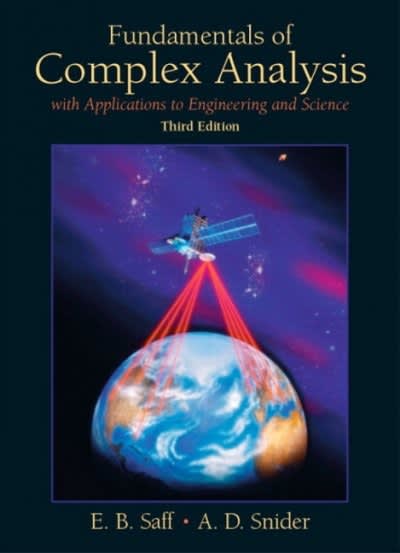Question
Suppose that you work for conservation of natural areas at the Bureau of Land Management. Your section concerns the effect of wildfire on natural areas.
Suppose that you work for conservation of natural areas at the Bureau of Land Management. Your section concerns the effect of wildfire on natural areas. Your supervisor asked you to analyze a temporal trend in wildfire. In particular, she is interested in the following associations:
1. Is the number of wildfires per year increased?
2. Is the total burned area (in acre) per year increased?
3. Is the burned area (in acre) per fire increased?
The accompanied data file contains the number of wildfires, total burned area, and burned area per fire in the U.S. from 2000 to 2019. Refer to Correlations and Regressions in JMP Learning Library.
Question 1. Using JMP, create three scatter plots which show each association (year and number of wildfires, year and total burned area, and year and burned area per fire). Clearly label the graphs. Note that year should be on the x-axis. Attach the scatterplot to this report. Refer to the textbook 12.2. (15%)
Question 2. Using the scatter plot created in Question 1, perform visual assessments. Describe the trend, strength, and shape of each association. Refer to the textbook 12.2. (15%)
Association between year and number of wildfires:
Association between year and total burned area:
Association between year and burned area per fire:
Question 3. Using JMP, calculate correlation coefficient (r) and coefficient of determination (r2) for each association and determine the values in the below table. Refer to the textbook 12.3. (15%) Variables | Correlation coefficient (r) | Coefficient of determination (r2) |
Year and number of wildfires | ||
Year and total burned area | ||
Year and burned area per fire |
Data
Date | Number of Fires | Acres Burned | Acres Burned per Fire |
2000 | 9,135 | 606,869 | 66.4 |
2001 | 6,961 | 367,544 | 52.8 |
2002 | 13,942 | 1,702,508 | 122.1 |
2003 | 5,744 | 361,081 | 62.9 |
2004 | 6,554 | 1,142,287 | 174.3 |
2005 | 4,684 | 1,331,249 | 284.2 |
2006 | 15,403 | 1,196,351 | 77.7 |
2007 | 9,654 | 502,835 | 52.1 |
2008 | 9,536 | 672,117 | 70.5 |
2009 | 6,614 | 493,268 | 74.6 |
2010 | 4,027 | 812,459 | 201.8 |
2011 | 6,567 | 1,345,060 | 204.8 |
2012 | 5,415 | 1,363,293 | 251.8 |
2013 | 4,046 | 1,252,719 | 309.6 |
2014 | 4,463 | 172,860 | 38.7 |
2015 | 6,430 | 1,868,614 | 290.6 |
2016 | 5,230 | 526,926 | 100.8 |
2017 | 5,336 | 600,373 | 112.5 |
2018 | 5,112 | 812,501 | 158.9 |
2019 | 5,657 | 1,331,968 | 235.5 |
2020 | 5,939 | 1,035,963 | 174.4 |
Step by Step Solution
There are 3 Steps involved in it
Step: 1

Get Instant Access to Expert-Tailored Solutions
See step-by-step solutions with expert insights and AI powered tools for academic success
Step: 2

Step: 3

Ace Your Homework with AI
Get the answers you need in no time with our AI-driven, step-by-step assistance
Get Started


